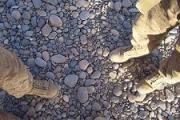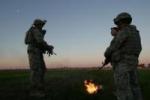A couple of recent threads detailing the Stryker Bde in the Arghandab area (http://council.smallwarsjournal.com/...ead.php?t=8082) and how Taliban take over a village (http://council.smallwarsjournal.com/...ead.php?t=9205) have caused me to rethink my attitude towards denial of insurgent freedom of maneuver.
Villages and other populated areas can be considered sanctuaries for insurgents until counter-insurgent forces wrest control away. As such, I'm curious what you all think are relevant factors when trying to deny access to an area, in both kinetic and non-kinetic forms. I think these sort of ops can be both enemy- and population-centric in a seamless way, and they need not be a black or white proposition that has been sensationalized in recent media offerings.
ETA: I guess it would be better to frame my question through the use of a hypothetical scenario (I'll call it a tactical decision game). Let's say we are dealing with Pashtun Taliban who have been slipping into a series of villages along the Helmand River at night, to conduct an intimidation effort against local civilians in order to secure poppy cultivation and onward shipment. They receive passive and active support in the process, ranging from areas to rest, cache supplies and arms/ammunition. When the feel secure enough, they remain in these areas and move amongst the people as they go about their daily routine, holding Sharia Law courts to keep the locals in line. Their endstate is to control a network of villages through subversion first, but intimidation if required. This network of villages, while producing funds via opium cultivation and other taxes, is also intended to serve as a footprint from which attacks against coalition forces can be conducted.














 "A Sherman can give you a very nice... edge."- Oddball,
"A Sherman can give you a very nice... edge."- Oddball, 
Bookmarks